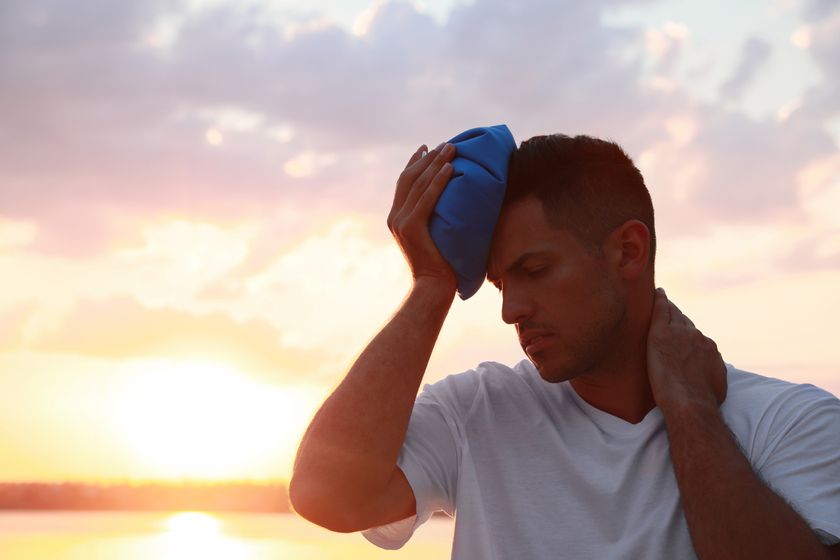- Categories :
- More
5 Signs of Heat Exhaustion (and How to Stay Safe in the Summer Heat)

As temperatures soar, so do the risks of heat-related illnesses. Among the most common and dangerous is heat exhaustion, a condition that can sneak up on you—especially during prolonged outdoor activity or exercise. Whether you're enjoying a summer hike, running errands, or working outside, knowing the warning signs and prevention strategies is key to staying healthy.
What is Heat Exhaustion?
Heat exhaustion occurs when your body overheats due to prolonged exposure to high temperatures—often combined with dehydration. Unlike heat stroke, which is a medical emergency, heat exhaustion is treatable if caught early. But the symptoms can be subtle or escalate quickly, so recognizing them is essential.
5 Warning Signs of Heat Exhaustion
-
Cool, Moist Skin with Goosebumps (Even in the Heat)
One of the first signs of heat exhaustion may be cool, clammy skin—often accompanied by goosebumps even when it’s blazing outside. This is your body’s way of trying to cool down, but it’s a red flag that your internal temperature is out of balance. -
Dizziness and Fainting
Feeling lightheaded or dizzy, especially when standing up, could mean your body isn’t circulating blood effectively due to heat. In more severe cases, fainting may occur. -
Fatigue and Muscle Cramps
If you suddenly feel unusually tired or begin experiencing muscle cramps, it could be a sign your body is depleted of essential salts and fluids. Muscle cramps are especially common during or after strenuous activity in hot conditions. -
Nausea or Headache
An upset stomach or pounding head may not just be from the sun glaring in your eyes—these are also hallmark symptoms of heat exhaustion. Left unchecked, these can worsen quickly. -
Rapid Heartbeat and Heavy Breathing
A weak but rapid pulse and fast, deep breathing signal that your heart is working overtime to cool your body down. This can lead to more serious complications if not addressed.
Hydration: Your First Line of Defense
Staying hydrated is one of the simplest and most effective ways to prevent heat exhaustion. But water alone isn't always enough—especially when sweating heavily.
-
Drink 8–10 glasses of water daily, more if you're active or outside often.
-
Avoid caffeinated drinks, as they can contribute to dehydration.
-
Replenish electrolytes (salts, sugars, and fluids) lost through sweat by drinking electrolyte-rich beverages or adding hydration packets to your water.
-
Watch for early signs of dehydration: dry mouth, dizziness, confusion, and headaches.
5 Safety Tips to Beat the Summer Heat
-
Stay Hydrated
Keep water with you throughout the day and sip consistently—even if you’re not thirsty. -
Dress Appropriately
Wear light-colored, loose-fitting clothing made from breathable fabrics like cotton or moisture-wicking synthetics. -
Apply Sunscreen
Sunburn can inhibit your body’s ability to cool itself. Use a broad-spectrum SPF 30+ and reapply every 2 hours, especially after sweating or swimming. -
Time Outdoor Activities Wisely
Try to schedule outdoor work or workouts for early morning or late evening, when the sun is less intense. Avoid the peak heat hours between 10 AM and 4 PM. -
Know the Signs and Act Quickly
If you or someone else shows signs of heat exhaustion, move to a cooler area, rest, and rehydrate immediately. If symptoms don’t improve, seek medical help.
Final Thoughts
Don’t let the heat sneak up on you. Heat exhaustion is preventable—and treatable—if you know what to watch for. Whether you're spending time outdoors for work or fun, a little preparation can go a long way. Stay hydrated, be smart about your sun exposure, and most importantly, listen to your body.
Stay cool, stay safe—and enjoy your summer!















